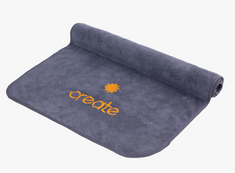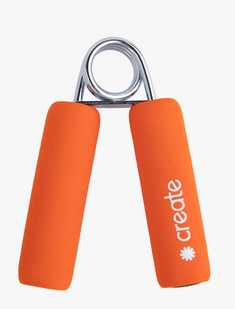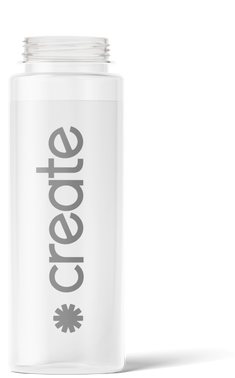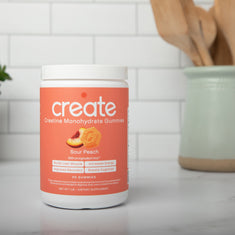Proven Remedies And Prevention Of Hives From Creatine
Unlock insights on managing hives from creatine. Explore symptoms, causes & preventive measures. Stay hydrated & seek medical advice for care.
Hives, also known as urticaria, have been occasionally linked to creatine supplementation, a popular choice among athletes and fitness enthusiasts aiming to improve performance and muscle growth. These itchy, raised welts can appear suddenly on the skin, causing discomfort and concern.
Understanding their manifestation is crucial for anyone using creatine for fitness gains, and exploring the potential connection between creatine and hives, offering expert strategies and insights to manage and prevent them effectively. Let’s dive deeper to discover how you can continue benefiting from creatine while minimizing the risk of hives for a smoother fitness journey!
Understanding Creatine
Creatine is found mainly in muscles, where it plays an important role in energy production. It replenishes ATP (adenosine triphosphate), the body's primary energy currency, during short bursts of intense physical activity like weightlifting or sprinting. As a supplement, creatine is commonly used to improve muscular performance by expanding muscle mass and improving strength and endurance.
Creatine monohydrate is the most explored and widely used among the various forms due to its effectiveness and safety profile. Creatine works by boosting the body's store of phosphocreatine, which helps regenerate ATP more rapidly during exercise. Despite its benefits, some individuals may experience side effects, including hives. The mechanisms linking creatine to hives remain speculative, with hypotheses ranging from immune system responses to metabolic alterations.
Understanding these aspects of creatine supplementation is crucial for athletes and fitness enthusiasts to make informed decisions about its usage and potential risks, ensuring they maximize benefits while minimizing adverse effects.
Symptoms Of Hives
Hives, also known as urticaria, manifest as raised, pink, or red welts on the skin that can vary in size from tiny flecks to big patches. They often have an irregular shape and may merge to form larger areas of swelling. The texture of hives is typically raised and may feel slightly rough or bumpy to the touch. These welts are accompanied by intense itching, which can be debilitating and lead to discomfort. Some people may also encounter a burning or prickling feeling in the affected areas.
Prompt recognition of hives is crucial for effective management, especially for individuals using creatine for sickness or other purposes. Identifying hives early allows timely intervention to alleviate symptoms and prevent further complications. Understanding these visual and sensory characteristics helps distinguish hives from other skin conditions, facilitating appropriate treatment and relief.
Causes Of Hives
Hives can be activated by diverse factors such as animal dander, insect bites, medications (like antibiotics or NSAIDs), pollen, emotional stress, and extreme temperatures (cold or sun exposure). These triggers can lead to an immune response, resulting in the characteristic welts and itching associated with hives.
Animal Dander
Allergic reactions to animal dander, particularly from cats, can trigger hives in sensitive individuals. Cat fur and saliva contain proteins that some people's immune systems react to, leading to skin inflammation and hives. Minimizing exposure by keeping pets out of bedrooms, using HEPA air filters, and regularly grooming and bathing pets can help reduce allergic reactions and the likelihood of hives.
Insect Bites
Insect bites, especially from mosquitoes, bees, and wasps, inject venom that can provoke hives in susceptible individuals. The venom triggers an immune response, causing localized swelling, redness, and itching. Prompt treatment with antihistamines and corticosteroid creams is essential to alleviate symptoms. Avoiding insect-prone areas, wearing long-sleeved clothing, and applying insect repellent can minimize the risk of hives from insect bites.
Medicines
Certain medications like antibiotics and pain relievers can induce allergic reactions that result in hives. These responses happen when the resistance power mistakenly identifies the medication as harmful and mounts a response, causing skin irritation and welts. It's crucial to consult healthcare professionals before starting new medications and be aware of common triggers. Alternative treatments may be recommended for individuals prone to medication-induced hives.
Pollen
Pollen from trees, grasses, and weeds can trigger allergic reactions and hives in individuals with pollen allergies. Exposure to pollen can lead to respiratory symptoms and skin reactions, including hives. Monitoring pollen counts, using air purifiers indoors, and wearing protective clothing outdoors can help minimize exposure. Managing seasonal allergies with antihistamines and nasal sprays can also alleviate symptoms and reduce the likelihood of hives.
Emotional Stress
Emotional stress can exacerbate conditions such as hives through chemical releases promoting inflammation and skin reactions. Stress hormones trigger immune responses that can manifest as itching, swelling, and hives. Managing stress through techniques like mindfulness, meditation, and regular exercise can help regulate these responses and reduce the incidence of stress-induced hives.
Managing Hives From Creatine

Managing hives triggered by creatine supplementation involves crucial steps such as seeking medical advice to assess underlying causes, ensuring adequate hydration, and adjusting creatine intake as recommended. These measures help alleviate symptoms and maintain overall health while maintaining fitness goals.
Seeking Medical Advice
When hives occur following creatine supplementation, seeking medical advice is crucial. Healthcare providers play a key role in analyzing the cause of hives and offering personalized guidance for effective management. Consulting with a healthcare professional helps rule out underlying medical conditions that may exacerbate hives and ensures safe adjustments to supplementation to prevent future occurrences.
Adequate Hydration
Adequate hydration is essential in minimizing hives triggered by creatine supplementation. Water helps flush out toxins from the body, maintains skin hydration, and reduces the likelihood of allergic reactions like hives. It is advised to consume at least eight to ten glasses of water every day, particularly when using creatine, to maintain overall health and hydration levels. This can help maintain skin health and lessen the intensity of hives.
Adjusting Creatine Supplementation
Adjusting creatine supplementation can effectively manage hives. Strategies such as reducing the dosage or switching to a different form of creatine can help mitigate allergic responses. Taking creatine with meals can also aid digestion and reduce gastrointestinal discomfort, potentially alleviating hives. Monitoring symptoms closely and adjusting supplementation under healthcare guidance ensures a balanced approach to achieving fitness goals while minimizing adverse effects like hives.
How ToTake Creatine Gummies While Having Hives
Understanding the triggers of hives is essential when considering creatine supplementation. Various factors can provoke hives, including allergies, stress, and even certain medications. Balancing fitness goals with managing hives symptoms requires careful consideration. It's crucial to confer a healthcare provider before starting creatine, especially for those with pre-existing conditions or sensitivity to supplements.
Opting for a well-researched and generally tolerated form of creatine monohydrate gummies can be beneficial. Begin with a low dosage of 3-5 grams daily and gradually increase it as tolerated, paying close attention to any adverse reactions. Staying hydrated is key to minimizing potential side effects.
Monitor your body's response closely when using creatine for well-being, adjusting intake or formulation if necessary to maintain overall health and fitness progress while managing hives effectively.











